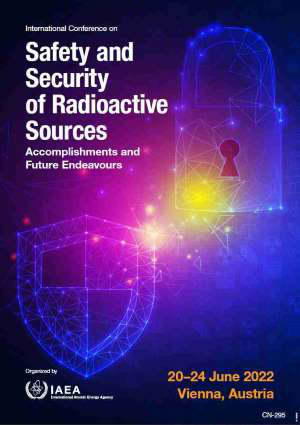Prof.
Suhairul Hashim
(Department of Physics, Faculty of Science, Universiti Teknologi Malaysia, Johor, 81310 UTM, Skudai, Malaysia)
Abstract
The present study investigates commercially available ion paint, evaluation being made using gamma-ray spectroscopy and Geant4 Monte Carlo simulations. A particular concern being the daily inhalation exposure dose. Organ doses have been simulated using the MIRD5 mathematical phantom, with incorporation of dose conversion factors. Sample code IP04 was found to contain the greatest activity, at 4.45, 31.9, and 2.96 Bq g-1, for 238U, 232Th, and 40K respectively, while the sample code NP18 recorded the least activity, at 16 and 30, Bq kg-1 for 238U and 232Th, respectively. Accordingly, code IP04 paint offered the greatest concentration, with mean percentages of 0.81, 0.026 and 0.06 for Th, U and Pb, respectively. Its use in a room designated room 1 is shown to give rise to an annual effective dose of 1.53 mSv y-1 given the assumption of exposure for a period of 8 h day-1. In brief, using these ion paints doses can exceed the annual public dose limit of 1 mSv.
| Country OR Intl. Organization |
Malaysia
|
Prof.
Suhairul Hashim
(Department of Physics, Faculty of Science, Universiti Teknologi Malaysia, Johor, 81310 UTM, Skudai, Malaysia)
Mr
Halmat Jalal Hassan
(Department of Physics, Faculty of Science, Universiti Teknologi Malaysia, Johor, 81310 UTM, Skudai, Malaysia)
Ms
Nor Zati Abu Hanifah
(Department of Physics, Faculty of Science, Universiti Teknologi Malaysia, Johor, 81310 UTM, Skudai, Malaysia)
Dr
Mohamad Syazwan Sanusi
(Department of Physics, Faculty of Science, Universiti Teknologi Malaysia, Johor, 81310 UTM, Skudai, Malaysia)
Mr
M.R. Fahmi
(School of Physics, Universiti Sains Malaysia, 11800 Gelugor, Pulau Pinang, Malaysia)
Prof.
David Bradley
(Department of Physics, University of Surrey, GU2 7XH, Guilford, United Kingdom)
Prof.
Rafael García-Tenorio
(Department of Applied Physics II, ETSA, University of Seville, Seville, Spain)
Mr
Rozman Tahar
(Atomic Energy Licensing Board, Jalan Dengkil, Batu 24, Dengkil, 43000, Selangor, Malaysia)

